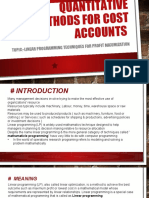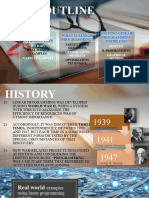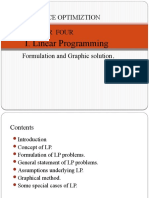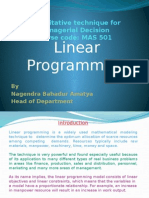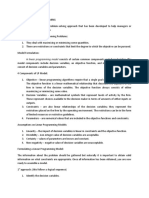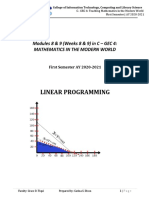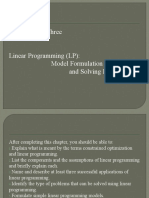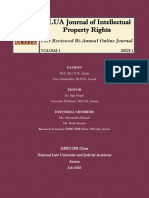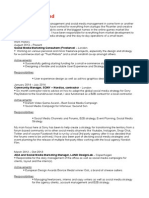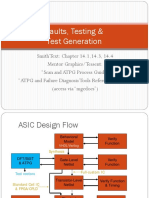0% found this document useful (0 votes)
20 views36 pagesMs 6230 5th Lecture Linear Programming
Linear programming (LP) is a mathematical method for optimizing a linear objective function subject to linear constraints, used in resource allocation and decision-making. Key components include decision variables, objective functions, constraints, and the feasible region, with the optimal solution found at the intersection of constraints. The document outlines steps for solving LP problems, including identifying variables, formulating the objective function, and using methods like the Simplex algorithm for complex scenarios.
Uploaded by
sonbrich13Copyright
© © All Rights Reserved
We take content rights seriously. If you suspect this is your content, claim it here.
Available Formats
Download as PPTX, PDF, TXT or read online on Scribd
0% found this document useful (0 votes)
20 views36 pagesMs 6230 5th Lecture Linear Programming
Linear programming (LP) is a mathematical method for optimizing a linear objective function subject to linear constraints, used in resource allocation and decision-making. Key components include decision variables, objective functions, constraints, and the feasible region, with the optimal solution found at the intersection of constraints. The document outlines steps for solving LP problems, including identifying variables, formulating the objective function, and using methods like the Simplex algorithm for complex scenarios.
Uploaded by
sonbrich13Copyright
© © All Rights Reserved
We take content rights seriously. If you suspect this is your content, claim it here.
Available Formats
Download as PPTX, PDF, TXT or read online on Scribd
/ 36



















